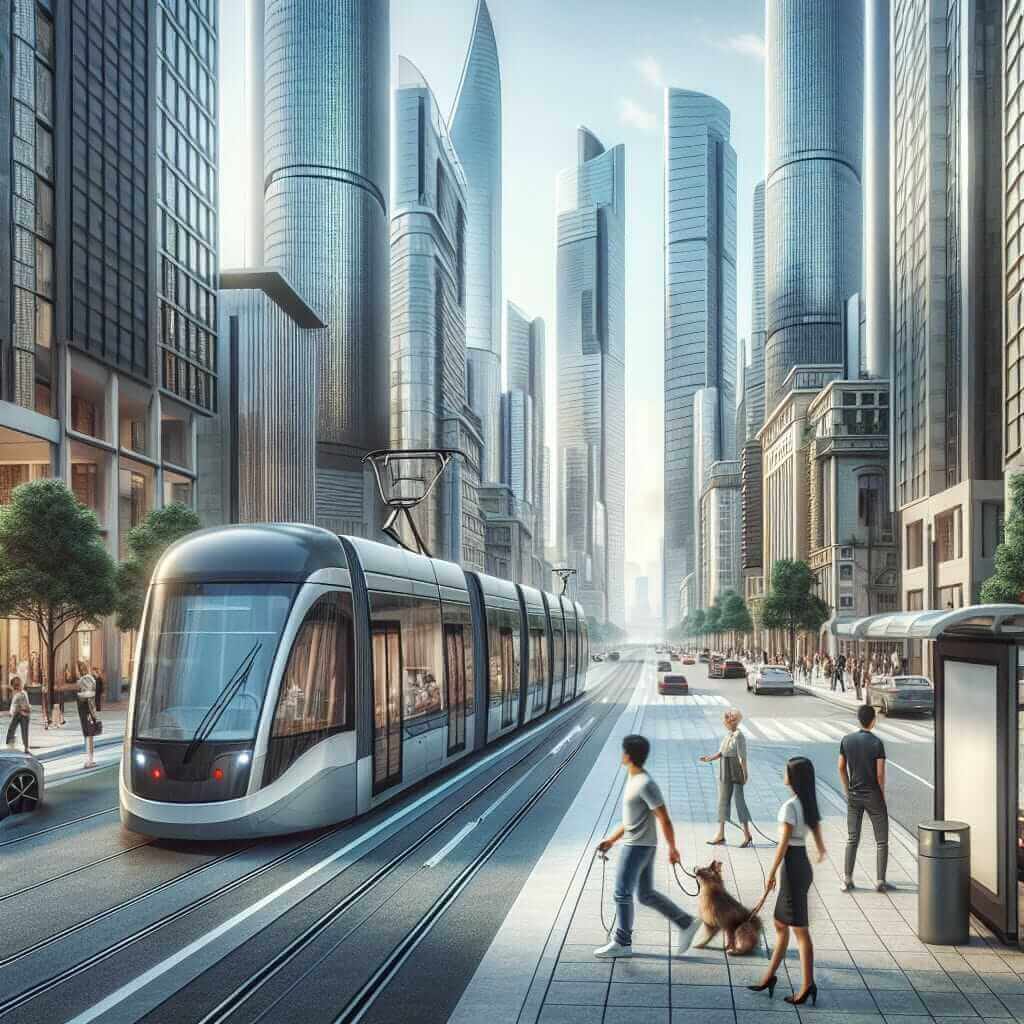The impact of human activities on the environment is a recurring theme in IELTS Writing Task 2, and the role of public transportation in mitigating urban pollution is a topic that has surfaced frequently. This essay will delve into this crucial issue, providing a comprehensive guide on how to craft a band-8 worthy response. We’ll analyze a sample question, break down the essay structure, offer vocabulary tips, and equip you with the knowledge to confidently tackle this topic in your IELTS exam.
Nội dung bài viết
Sample IELTS Writing Task 2 Question
Recent years have witnessed escalating concerns about environmental pollution in urban areas. Many argue that promoting public transportation is the most effective solution to this problem. To what extent do you agree or disagree?
Give reasons for your answer and include any relevant examples from your own knowledge or experience.
Analysis of the Question
This question presents a common IELTS format, asking you to express your opinion on a given statement. Key elements to note:
- Topic: The focus is on the effectiveness of public transport in combating urban pollution.
- Scope: The question specifically targets “urban areas,” implying a need to discuss issues pertinent to cities.
- Task: You must present a clear stance (agree, disagree, or a balanced view) and support it with logical reasoning and relevant examples.
Model Essay
Reducing Urban Pollution: The Power of Public Transportation
Rampant urbanization, coupled with a reliance on private vehicles, has rendered air pollution a pressing concern in many cities worldwide. While some argue that promoting public transportation offers the most effective solution, others believe alternative measures hold greater promise. This essay contends that while a multifaceted approach is essential, enhancing public transportation systems is undeniably crucial in mitigating urban pollution.
One compelling reason for bolstering public transport is its inherent ability to reduce vehicular emissions. Private cars, notorious for emitting significant amounts of harmful pollutants like carbon monoxide and nitrogen oxides, are a major contributor to smog and respiratory illnesses. Conversely, well-maintained public transport systems, particularly those utilizing electric or hybrid buses and trains, significantly decrease the number of individual vehicles on the road, leading to a direct reduction in emissions and improved air quality. For instance, cities like London and Copenhagen, which have invested heavily in expanding and modernizing their public transport networks, have witnessed a marked improvement in air quality, demonstrating the tangible benefits of such initiatives.

Furthermore, efficient public transportation can alleviate traffic congestion, another major culprit in urban pollution. When commuters opt for buses, trams, or subways instead of private cars, traffic flow improves, leading to shorter travel times and reduced idling. Idling engines are notorious for emitting a disproportionate amount of pollutants, exacerbating air quality issues. By incentivizing the use of public transport through measures like subsidized fares and dedicated bus lanes, cities can encourage a shift away from private vehicles, thereby easing congestion and its associated pollution.
However, it is crucial to acknowledge that simply expanding public transportation is insufficient. A holistic approach necessitates integrating it with other sustainable urban planning strategies. This includes promoting cycling and walking through dedicated bike lanes and pedestrian-friendly infrastructure, implementing stricter emission standards for vehicles, and investing in green spaces within cities to absorb pollutants. Moreover, raising public awareness about the environmental impact of individual transportation choices and fostering a culture of sustainable living are vital for long-term success.
In conclusion, while a multifaceted approach is essential for tackling urban pollution, public transportation plays a pivotal role in mitigating this pressing issue. By reducing vehicular emissions, alleviating traffic congestion, and fostering sustainable transportation habits, well-designed and accessible public transport systems can contribute significantly to creating cleaner, healthier, and more livable urban environments for generations to come.
(Word Count: 342)
Writing Tips
- Clear Stance: Clearly state your position on the issue in the introduction. This essay agrees that public transport is crucial but acknowledges the need for a multifaceted approach.
- Cohesive Paragraphs: Develop each paragraph with a clear topic sentence and supporting evidence.
- Examples: Use concrete examples like London and Copenhagen to illustrate your points.
- Varied Vocabulary: Avoid repetition by using synonyms and related terms (e.g., “mitigating,” “combating,” “tackling”).
- Transitions: Use transition words and phrases to ensure a smooth flow of ideas (e.g., “furthermore,” “however,” “in conclusion”).
Vocabulary Focus
- Rampant (adjective): /ˈræm.pənt/ – Spreading uncontrollably.
- Mitigating (verb): /ˈmɪt.ɪ.ɡeɪt/ – To reduce the harmful effects of something.
- Inherent (adjective): /ɪnˈhɪə.rənt/ – Existing as a natural or basic part of something.
- Notorious (adjective): /noʊˈtɔːr.i.əs/ – Famous or well-known for something bad.
- Smog (noun): /smɑːɡ/ – A type of air pollution, a mixture of smoke and fog.
- Alleviate (verb): /əˈliː.vi.eɪt/ – To make something bad less severe.
- Idling (adjective): /ˈaɪ.dəl.ɪŋ/ – (of an engine) running but not moving.
- Incentivizing (verb): /ɪnˈsen.tɪ.vaɪz/ – To make someone want to do something.
- Holistic (adjective): /hoʊˈlɪs.tɪk/ – Relating to the whole of something, not just a part.
- Fostering (verb): /ˈfɑː.stər/ – To encourage the development or growth of something.
Conclusion
Mastering the art of writing about complex environmental issues is essential for IELTS success. By understanding the structure of the essay, using relevant vocabulary, and providing strong arguments backed by examples, you can confidently tackle questions related to public transportation and urban pollution. Remember to practice regularly, analyze sample essays, and seek feedback to refine your writing skills.
Remember, the key is not just to write, but to communicate your ideas effectively and leave a lasting impression on the examiner. Good luck!